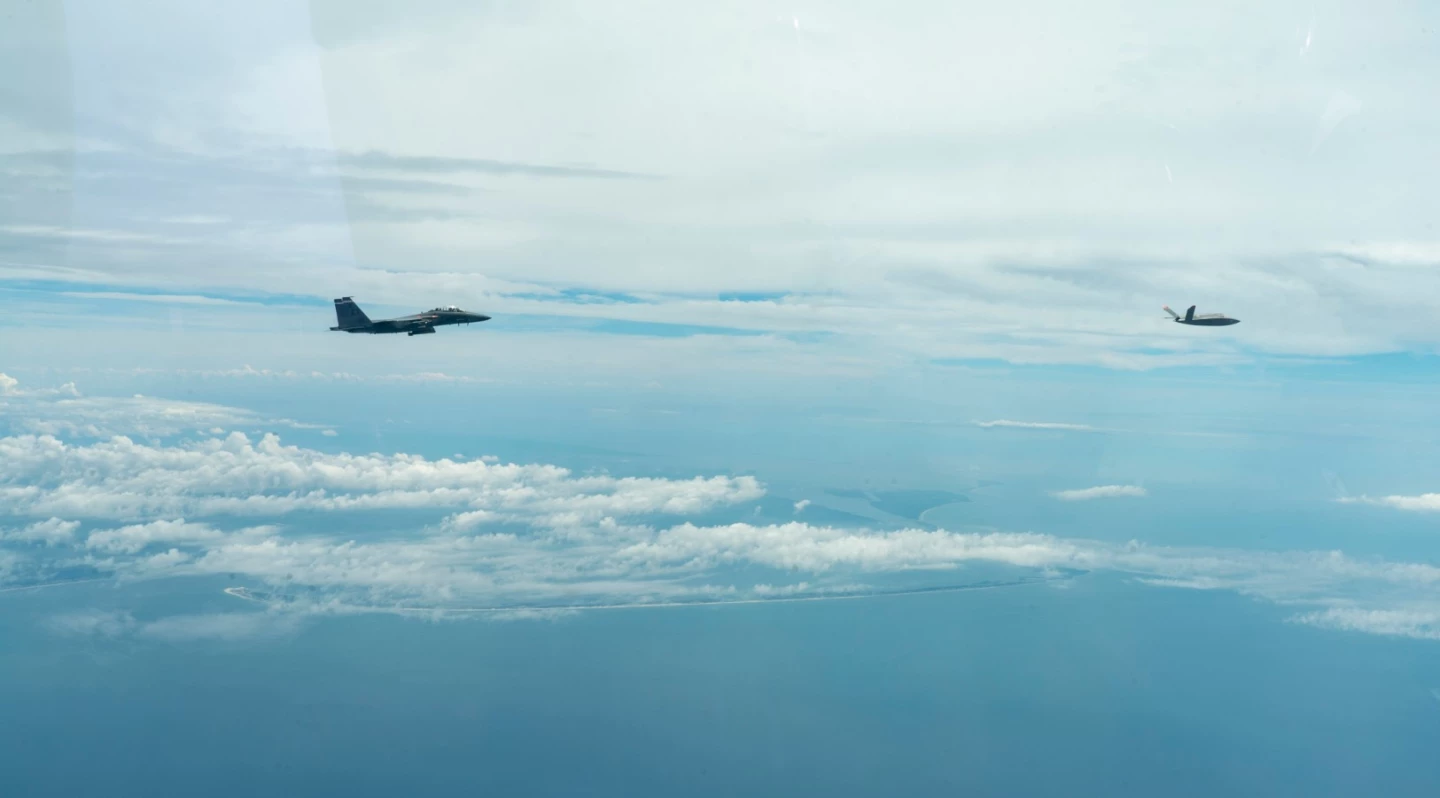The US Air Force's XQ-58A Valkyrie experimental combat drone has made its first flight under the control of artificial intelligence. On July 25, 2023, the robotic aircraft completed a three-hour sortie at the Eglin Test and Training Complex in Florida.
The latest test is an outgrowth of the Skyborg Vanguard program focussed on developing the ability of an artificial intelligence/machine learning agent to fly safely while solving tactically relevant challenges. The agent was trained on a simulator where it honed its skills during millions of hours of high fidelity simulations and sorties in the X-62 VISTA with algorithms developed by AFRL’s Autonomous Air Combat Operations (AACO) team.
A joint project of Kratos Unmanned Aerial Systems (KUAS) and the US Air Force Research Laboratory (AFRL), the XQ-58A Valkyrie is aimed at developing the necessary technology to create a jet-powered autonomous combat drone that can operate independently without human control, in conjunction with other drones, and as part of a human/machine team.
“The mission proved out a multi-layer safety framework on an AI/ML-flown uncrewed aircraft and demonstrated an AI/ML agent solving a tactically relevant 'challenge problem' during airborne operations,” said Col. Tucker Hamilton, DAF AI Test and Operations chief. “This sortie officially enables the ability to develop AI/ML agents that will execute modern air-to-air and air-to-surface skills that are immediately transferrable to other autonomy programs.”

The idea is to keep down the ever spiraling costs of piloted aircraft by providing the US Air Force with a robotic alternative that can escort and work with fighter aircraft and can also be sent into especially dangerous areas.
With a wingspan of 22 ft (6.7 m) and a top speed of 567 knots (652 mph, 1,050 km/h), the Valkyrie has a service ceiling of 44,997 ft (13,715 m) and a range of 2,128 nm (2,449 miles, 3,941 km). It is capable of carrying up to eight weapons, including JDAMs and other small-diameter bombs.
"AI will be a critical element to future war-fighting and the speed at which we’re going to have to understand the operational picture and make decisions," said Brigadier General Scott Cain, AFRL commander. "AI, Autonomous Operations, and Human-Machine Teaming continue to evolve at an unprecedented pace and we need the coordinated efforts of our government, academia and industry partners to keep pace."
Source: US Air Force






